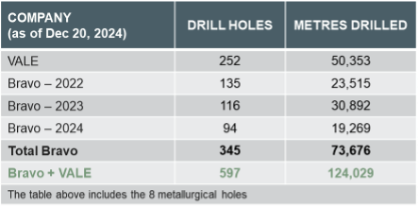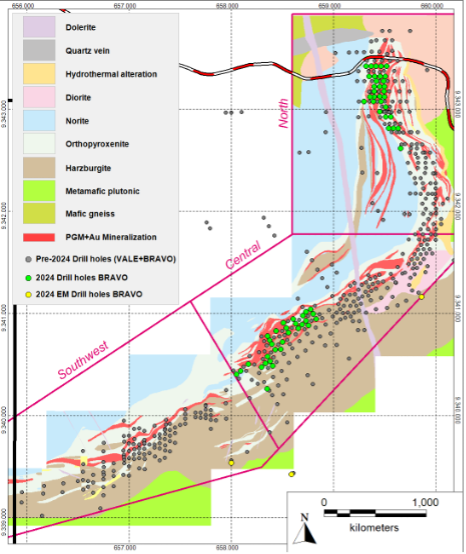The Luanga palladium + platinum + rhodium + gold + nickel (PGM+Au+Ni) exploration project is located in Carajás Mineral Province of Brazil in the municipality of Curionópolis in the central-eastern region of Pará State, ~500km south of Pará’s capital city Belém (a sizeable coastal port city) and ~40k ENE of Parauapebas, the economic centre of the Carajás.
Luanga is interpreted as a Neo-Archean age PGM+Au+Ni deposit hosted in a layered mafic and ultramafic complex with a surface expression of approximately 7km by 3.5km. It is broadly similar in age and geological setting to some of the world’s major PGM deposits and producing mines.
Luanga benefits from extensive exploration activities in the late 1990s to early 2000s completed by the previous owner - the Brazilian based diversified mining major Vale S.A. This includes 252 diamond drill holes (50,352m) drilled on 100 to 200m lines over the 7km mineralized envelope, a Historical Estimate* of 142Mt @ 1.24 g/t Pd+Pt+Au & 0.11% Ni and fatal flaw metallurgical testwork.
The Luanga palladium + platinum + rhodium + gold + nickel (PGM+Au+Ni) exploration project is located in Carajás Mineral Province of Brazil in the municipality of Curionópolis in the central-eastern region of Pará State, ~500km south of Pará’s capital city Belém (a sizeable coastal port city) and ~40k ENE of Parauapebas, the economic centre of the Carajás.
Luanga is interpreted as a Neo-Archean age PGM+Au+Ni deposit hosted in a layered mafic and ultramafic complex with a surface expression of approximately 7km by 3.5km. It is broadly similar in age and geological setting to some of the world’s major PGM deposits and producing mines.
Luangas has been through an extensive exploration program carried by previous owner Vale S/A in the late 1990s to early 2000s and by Bravo Mining Corp. since 2022. A total of 124,029 metres of drilling over, or 597 drill holes, have been drilled as at December 2024.


Bravo has recently updated its MRE, which currently stands at 10.4Moz of Palladium Equivalent (“PdEq1”) Measured + Indicated, and 5.0Moz PdEq1 Inferred.
86% of total MRE tonnage sits above 250 metres level while remains substantial growth potential at depth as mineralization continues down to ~450 metres in certain areas of the deposit.
In addition, Bravo has identified Iron Oxide Copper Gold-style (“IOCG-style”) mineralization when it intersected discovery drill holes DDH2405T002 with 11.5m of massive/semi-massive/breccia high-grade copper sulphide mineralization grading 14.3% Cu, 3.3g/t Au and DDH2405T004 with 8.8m grading 9.5% Cu and 2.1g/t Au.
BRAVO aims to ensure development optionality to be in a position to advance Luanga at the most opportune time in the commodity cycle.
